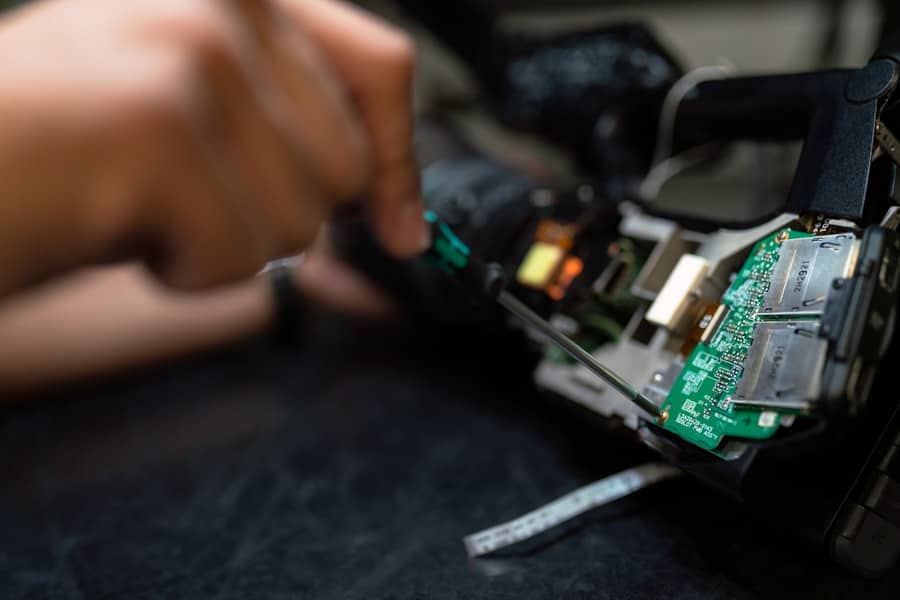
Cabinet hardware refers to the knobs, pulls, handles, and other accessories that are installed on cabinet doors and drawers. While they may seem like small details, cabinet hardware plays a crucial role in the overall look and functionality of your cabinets. Proper installation is important to ensure that the hardware is secure and aligned correctly.
Key Takeaways
- Choosing the right hardware is crucial for a successful cabinet hardware installation.
- Preparing your cabinets properly before installation can save time and frustration.
- Measuring and marking accurately is essential for proper hardware placement.
- Drilling holes carefully and accurately is important to avoid damaging your cabinets.
- Adjusting hardware for proper alignment is key to achieving a professional look.
Choosing the Right Hardware for Your Cabinets
When choosing hardware for your cabinets, there are several factors to consider. First, think about the style of your cabinets and the overall aesthetic you want to achieve. There are many different types of hardware available, including traditional knobs, sleek pulls, and modern handles. Consider the material and finish of the hardware as well, as this can greatly impact the look of your cabinets.
It's also important to choose hardware that is the right size for your cabinets. Measure the thickness of your cabinet doors and drawers to ensure that the hardware will fit properly. Additionally, consider the weight of the hardware and make sure that it is appropriate for the size and weight of your cabinets.
Preparing Your Cabinets for Installation
Before installing new hardware, it's important to properly prepare your cabinets. Start by cleaning the surfaces where the hardware will be installed. Use a mild detergent and warm water to remove any dirt or grease. Dry the surfaces thoroughly before moving on to the next step.
If you are replacing old hardware, you will need to remove it first. Use a screwdriver or drill to remove any screws or bolts holding the old hardware in place. Once the old hardware is removed, you may be left with holes in your cabinets. Fill these holes with wood filler or putty and allow it to dry completely before proceeding with installation.
Measuring and Marking for Hardware Placement
Accurate measurements and markings are crucial for proper placement of cabinet hardware. Start by gathering the necessary tools, including a tape measure, pencil, and level. Measure and mark the desired placement for knobs and pulls on your cabinet doors. For knobs, the general rule of thumb is to place them about 2-3 inches from the corner of the door. For pulls, measure and mark the center point of each drawer or door.
When measuring for drawer pulls and handles, it's important to consider the size and weight of the hardware. Larger drawers may require longer pulls or handles for proper balance and functionality. Measure the width of the drawer front and mark the center point for installation.
Drilling Holes for Cabinet Hardware
Once you have measured and marked the placement for your cabinet hardware, it's time to drill the necessary holes. The type of drill you use will depend on the material of your cabinets. For most wooden cabinets, a standard drill with a drill bit that matches the size of your hardware screws will work fine.
Before drilling, it's important to take safety precautions. Wear safety goggles to protect your eyes from any flying debris. If you are drilling into metal or other hard materials, consider using a lubricant to reduce friction and prevent overheating.
When drilling holes, it's important to keep the drill straight and steady. Use a level or straight edge as a guide to ensure that your holes are aligned properly. Start with a small pilot hole and gradually increase the size until it matches the diameter of your hardware screws.
Installing Knobs and Pulls on Cabinet Doors

Installing knobs and pulls on cabinet doors is a relatively straightforward process. Start by inserting the screws through the back of the door into the pre-drilled holes. Use a screwdriver or drill to tighten the screws until the hardware is secure.
When installing multiple knobs or pulls on a single door, it's important to ensure that they are aligned properly. Use a level or straight edge to guide your placement and make adjustments as needed.
Installing Drawer Pulls and Handles
Installing drawer pulls and handles follows a similar process to installing knobs and pulls on cabinet doors. Start by inserting the screws through the back of the drawer front into the pre-drilled holes. Use a screwdriver or drill to tighten the screws until the hardware is secure.
When installing multiple pulls or handles on a single drawer, it's important to ensure that they are aligned properly. Use a level or straight edge to guide your placement and make adjustments as needed.
Adjusting Cabinet Hardware for Proper Alignment
Even with careful measurements and markings, it's possible for cabinet hardware to become misaligned during installation. Common alignment issues include hardware that is crooked or not level. Fortunately, there are simple adjustments you can make to correct these issues.
If your hardware is crooked, loosen the screws slightly and adjust the position until it is straight. Use a level or straight edge to guide your adjustments. Once the hardware is aligned properly, tighten the screws to secure it in place.
If your hardware is not level, loosen the screws slightly and adjust the position until it is even. Use a level or straight edge to guide your adjustments. Once the hardware is level, tighten the screws to secure it in place.
Tips for Maintaining Your Cabinet Hardware
Proper maintenance is important to keep your cabinet hardware looking and functioning its best. Regularly clean and polish your hardware using a mild detergent and warm water. Avoid using abrasive cleaners or harsh chemicals, as these can damage the finish.
To prevent damage to your hardware, avoid using excessive force when opening or closing cabinets. If you notice any loose or worn hardware, replace it as soon as possible to prevent further damage.
Troubleshooting Common Cabinet Hardware Installation Issues
Despite your best efforts, you may encounter some common issues during cabinet hardware installation. Loose hardware is a common problem that can be easily fixed by tightening the screws. If the screws are stripped or won't tighten properly, you may need to replace them with longer or thicker screws.
Crooked hardware can be corrected by loosening the screws and adjusting the position until it is straight. Use a level or straight edge to guide your adjustments. If the holes are misaligned, you may need to fill them with wood filler or putty and start over with new holes.
Proper cabinet hardware installation is essential for both the functionality and aesthetics of your cabinets. By following the steps outlined in this article, you can ensure that your hardware is installed securely and aligned correctly. Don't be afraid to try DIY installation – with the right tools and techniques, you can achieve professional-looking results. If you have any questions or need further information, there are many resources available online and at your local home improvement store.
FAQs
What is cabinet hardware installation?
Cabinet hardware installation refers to the process of attaching knobs, pulls, hinges, and other accessories to cabinets and drawers.
Why is cabinet hardware installation important?
Cabinet hardware installation is important because it enhances the functionality and appearance of cabinets and drawers. It also makes it easier to open and close cabinets and drawers.
What are the essential tools needed for cabinet hardware installation?
The essential tools needed for cabinet hardware installation include a drill, drill bits, screwdriver, measuring tape, level, and a template.
What are the essential tips for simplified cabinet hardware installation?
The essential tips for simplified cabinet hardware installation include measuring and marking the placement of the hardware, using a template for accurate drilling, pre-drilling holes, using the right size screws, and using a level to ensure the hardware is straight.
What are the common mistakes to avoid during cabinet hardware installation?
The common mistakes to avoid during cabinet hardware installation include not measuring accurately, not using a template, not pre-drilling holes, using the wrong size screws, and not using a level to ensure the hardware is straight.
Can I install cabinet hardware myself?
Yes, you can install cabinet hardware yourself. However, it is important to have the necessary tools and follow the essential tips for simplified cabinet hardware installation.

